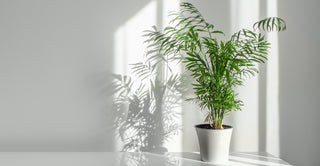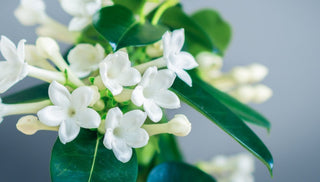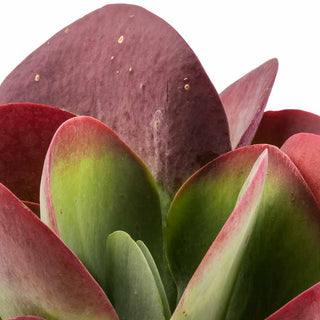☘ Origin: Mexico and Guatemala
☘ Family: Araceae
☘ Botanical Name: Chamaedorea elegans
☘ Common Name: Good Luck Palm
Symbolism: The Parlor Palm is a popular houseplant that is said to bring good fortune and wealth and it symbolizes vitality & good fortune.
🍃 Shop Your Chamaedorea Palm Today!
🔆 Light
Thrives in medium to bright indirect sunlight and can tolerate low light conditions. Not suited for intense, direct sun. They often do well with northern exposure.
Give your plant a turn every few days to expose all sides to light for even growth from all sides.
💧 Water
Like many palms, Parlor palms are sensitive to overwatering and cannot tolerate being waterlogged or sitting in a saturated potting mix. Ideally, keep moisture at an even level. Err on the side of slightly too dry rather than overwatering. Water when the top (2.5cm) of soil feels dry. Yellow fronds will indicate the plant needs more water.
To give your plant the absolute best, room-temperature rainwater and bottled spring water are your best options. Any water containing sugar or salt will hurt your plant!
☁️ Humidity
It will thrive with average humidity. If your palm begins to develop dry leaf margins or brown tips, it's most likely caused by cold drafts or prolonged dry periods. To remedy this situation, raise the humidity levels before overwatering by grouping your houseplants together, regularly misting its leaves or placing a humidifier to create perfect humidity levels in the room.
🌡️ Temperature
The Parlor palm prefers room temperatures between (18-26°C). Keep it away from cold drafts near windows, vents, and outside doors.
🧴️ Food
Feed with a liquid fertilizer twice during the growing season. During winter your palm is dormant, so you won't have to fertilize it all. These plants are light feeders.
A general feed twice during the growing season, or once every couple of months will be enough for mature plants. Younger plants will be happy with slightly more, so aim for once a month.
🐾 Toxicity
Non-Toxic to Cats and Dogs.
➕ Additional Tips
Because they are tolerant of lower light conditions and sensitive to too much water, they are prime candidates to be "loved to death", either through overwatering or by getting too much direct sunlight.



